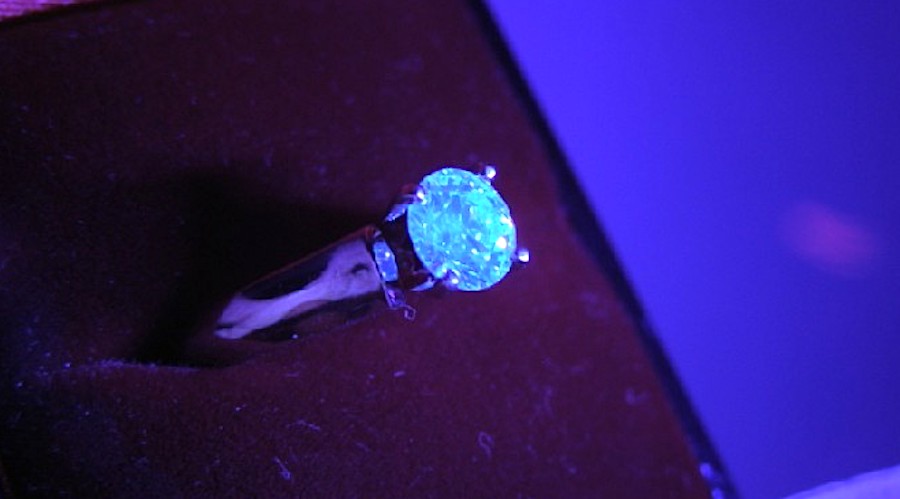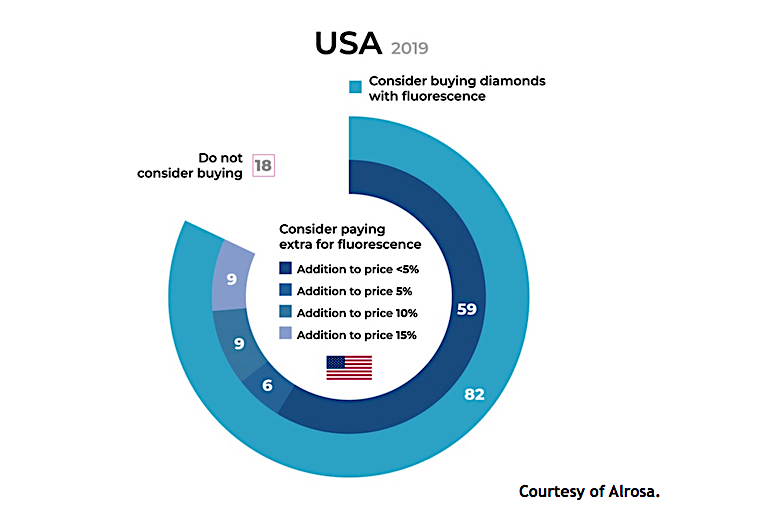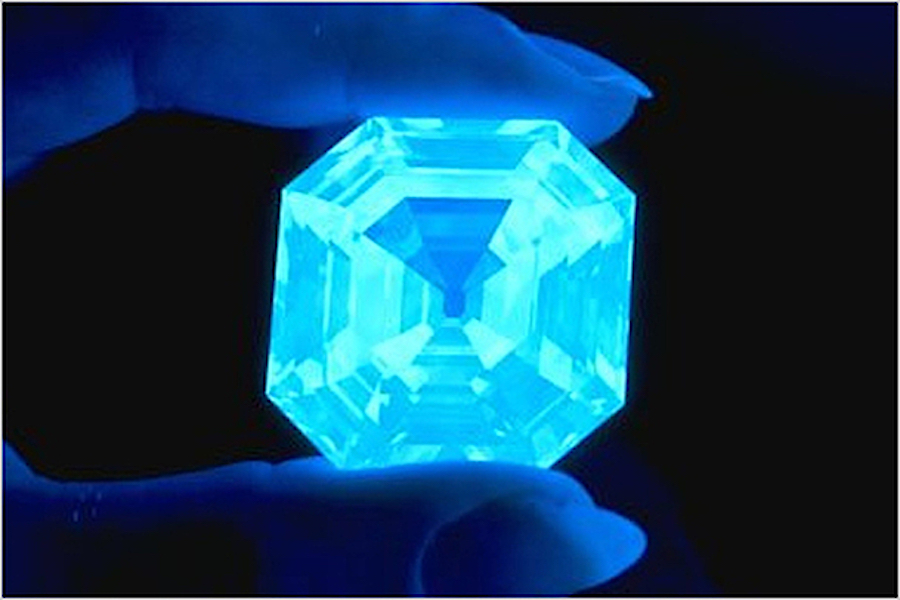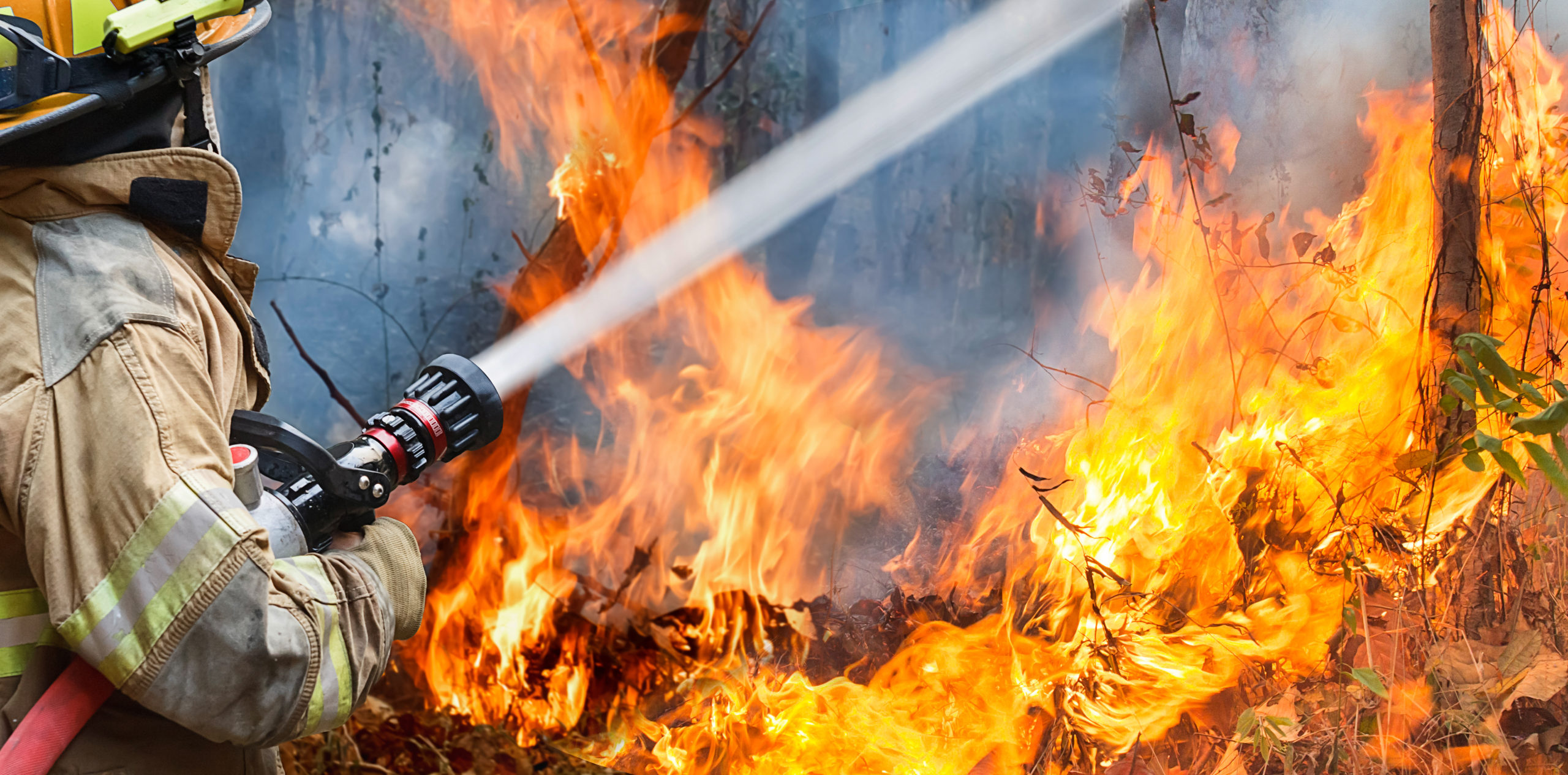Alrosa steps up efforts to brighten fluorescent diamond sales

Russia’s Alrosa (MCX:ALRS), the world’s top diamond miner by volume, is betting on a new strategy to boost its sales amid an industry-wide slowdown that has hit small companies the hardest.
The state-owned company is now selling naturally occurring fluorescent diamonds mixed with others. At the same time, it’s holding talks with global jewellery retailers about jointly marketing its ‘Luminous Diamonds’ brand, which uses the glowing stones.
Fluorescence, a bluish glow produced by ultraviolet rays (UV), is a characteristic of 25% to 35% of diamonds, according to the Gemological Institute of America (GIA).
The feature has traditionally been seen as a negative attribute as it can make a diamond appear “milky” or “oily” in direct sun or UV light. Alrosa’s marketing efforts are centred on changing those perceptions.

HRD Antwerp, Europe’s leading authority in grading of diamonds, backs Alrosa’s intention as in 2018 it conducted the largest study on fluorescence, which found the feature positively affects colour.
“For example, a J colour diamond with very strong fluorescence, will look several colour grades higher — as a G colour,” the company told MINING.com. “This fact sometimes gives jewellers an opportunity to sell such diamonds at a higher price.”
Glowing diamonds are most common in Russia and Canada due to their proximity to the Arctic, where they are usually found.
GfK market research agency recently conducted a study involving over 4,000 jewellery consumers to determine how they perceived fluorescent diamonds.
The survey revealed that 74% of the respondents in the US didn’t know what they were or were poorly informed about them. When educated, however, over 82% of respondents said they would consider buying a diamond with such a feature. And almost 60% of customers, mostly millennials, expressed their willingness to pay as much as 15% more to obtain a fluorescent diamond.

About half of all diamonds produced globally have some fluorescence, but those in which the feature is “strong” — the focus of Alrosa’s campaign — represent as much as 5-10% of global supply.
Global demand for all types of diamonds fell between 2018 and 2019, affecting small stones producers the most, due to an oversupply in that segment that dragged prices down.
Increasing demand for synthetic diamonds also weighed on prices. Man-made stones require less investment than mined ones and can offer more attractive margins.
Big companies have not been immune to the downward trend. De Beers, the world’s No. 1 diamond miner by value, reported in February its worst set of earnings since Anglo American (LON:AAL) acquired it in 2012.
More News
{{ commodity.name }}
{{ post.title }}
{{ post.date }}

Comments